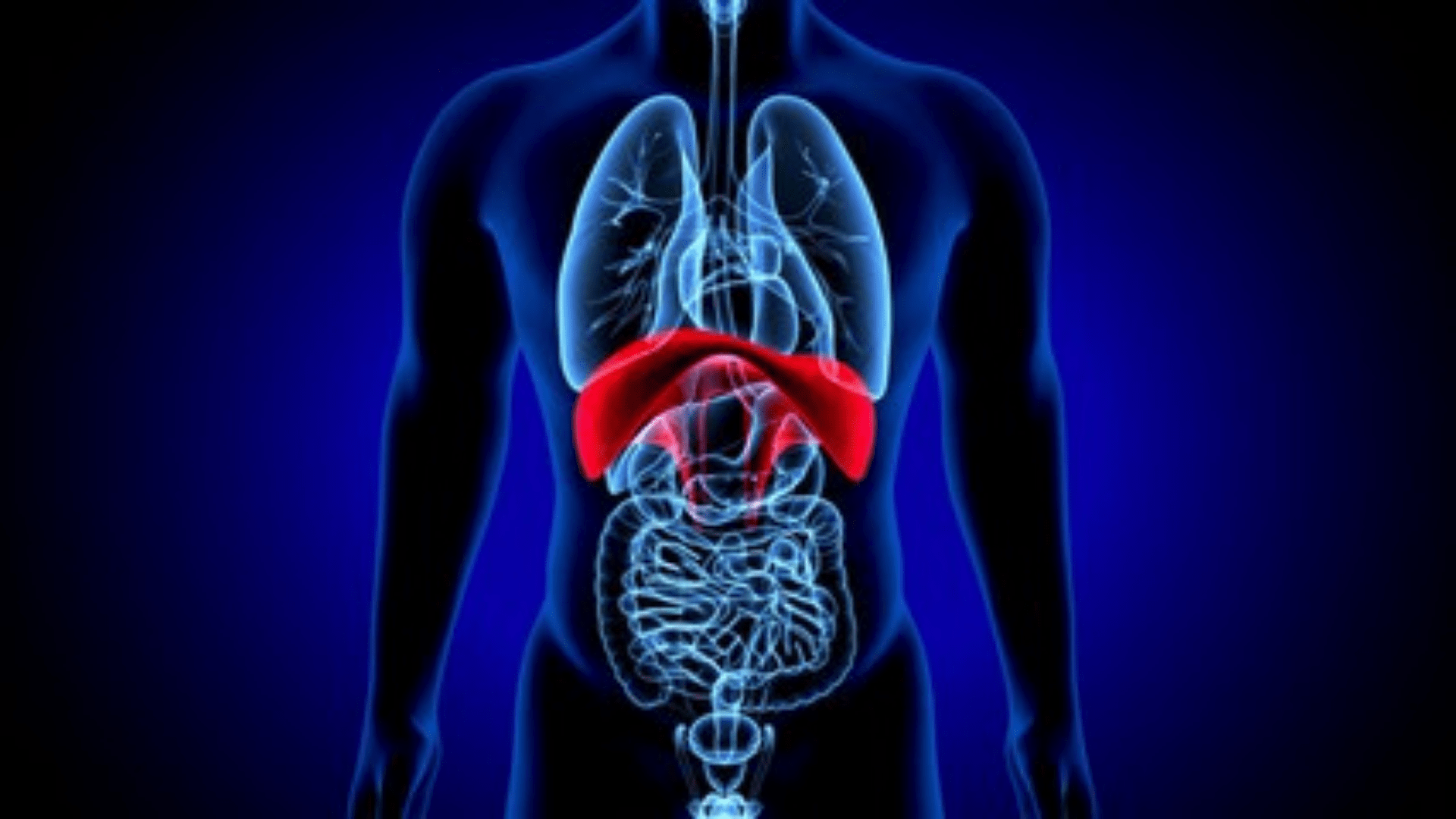
3 min read | Clinical Tool Kit
Taking Life in Your Hands – Manual Therapy for Diaphragm
Written by Juwayriah Dalvi
Graphics by Divya Sharma
Guest Contributor: Robert Libbey
Share this article
Table of Contents
The diaphragm is not the first muscle you may think of when we say Manual Therapy, but by the end of this article, you might start doing it!
Diaphragm – The muscle of life! The structure, function, and location of this muscle is a wonder in itself! It is a thin skeletal muscle measuring up to 105 mm in diameter is not only the primary respiratory muscle but allows for the passage of and impacts several important structures due to its near central position in the kinetic chain.
However, can we treat this involuntary respiratory muscle with our bare hands? The answer is a big yes! If you have raised those brows, we are on the right track. Let’s see if we can answer the questions popping in your head right now!
Why Manual Therapy?
Although the diaphragm is an involuntary muscle as the respiratory centers in the brain controls its action, it is a skeletal muscle nonetheless. Hence it is subjected to tightness, inflammation, spasms, and reduced firing and/or function due to all of these just like any other skeletal muscle. Manual therapy for the diaphragm targets all the above-mentioned aspects and delivers holistic results in its overall function.
How do I know if Manual therapy is indicated?
There is limited research on the methods of evaluation of diaphragm. Impaired firing and/or shortening of the diaphragm can be palpated by placing palms and fingers on the lateral costal margins and thumb on the xiphoid process. The tension in the fascia and muscle tissue and the trigger points can be palpated with hands just like it is palpated in any other skeletal muscle. Most of these techniques prevail on the basis of clinical experience and studies carried out on other skeletal muscles. There are limited studies carried out on the evaluation of diaphragm. [1] However, these norms have been accepted for the studies that have used manual therapy for diaphragm as an intervention in various conditions and shown strong results.
How do I give Manual therapy for the Diaphragm?
Manual therapy includes a variety of hands-on skills right from massage to deep tissue release. A combination of these techniques can be used to administer manual therapy for the diaphragm as well. A few techniques that have shown results are mentioned here:
Lift Diaphragm[2]
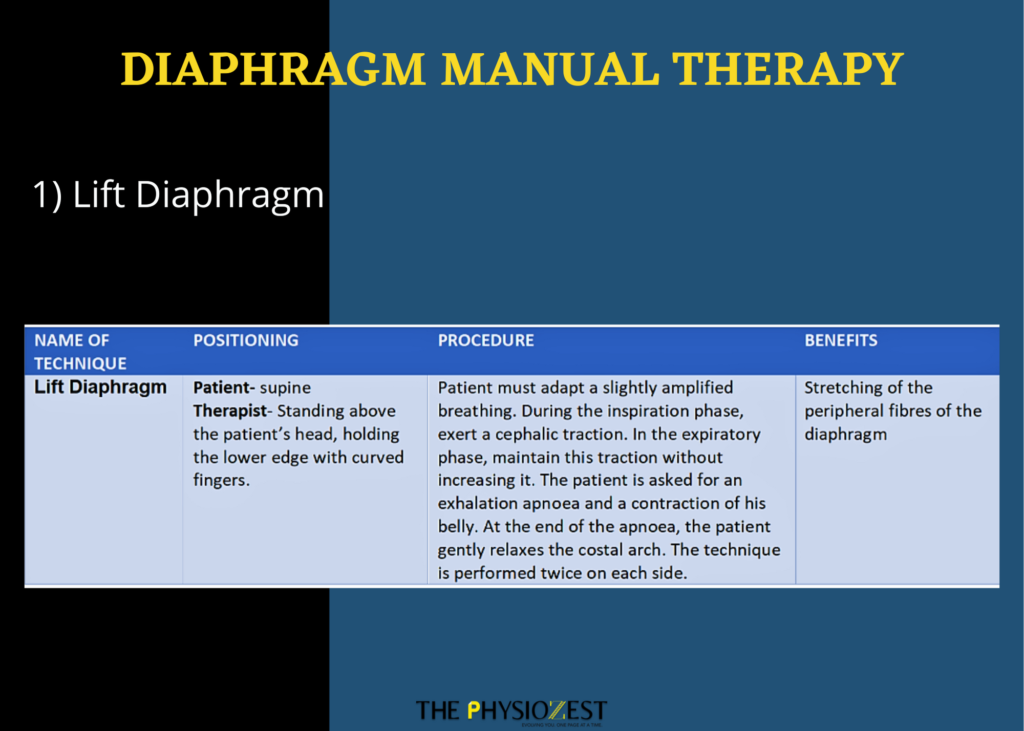
Relaxation of Diaphragm [2]
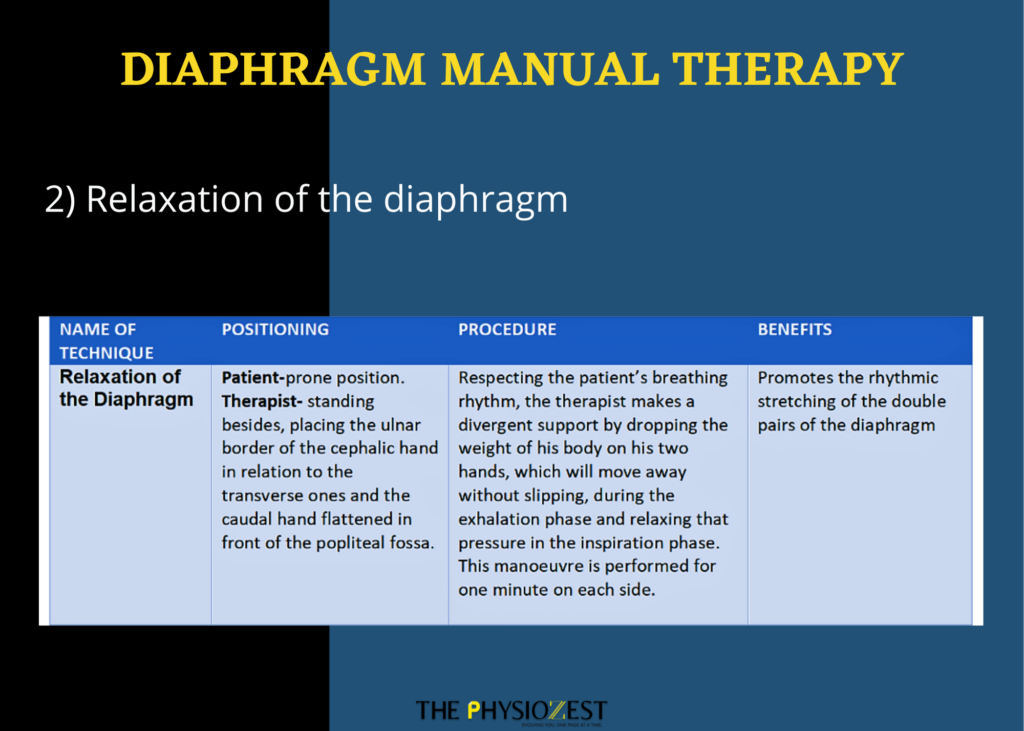
Manual Diaphragm Release Technique
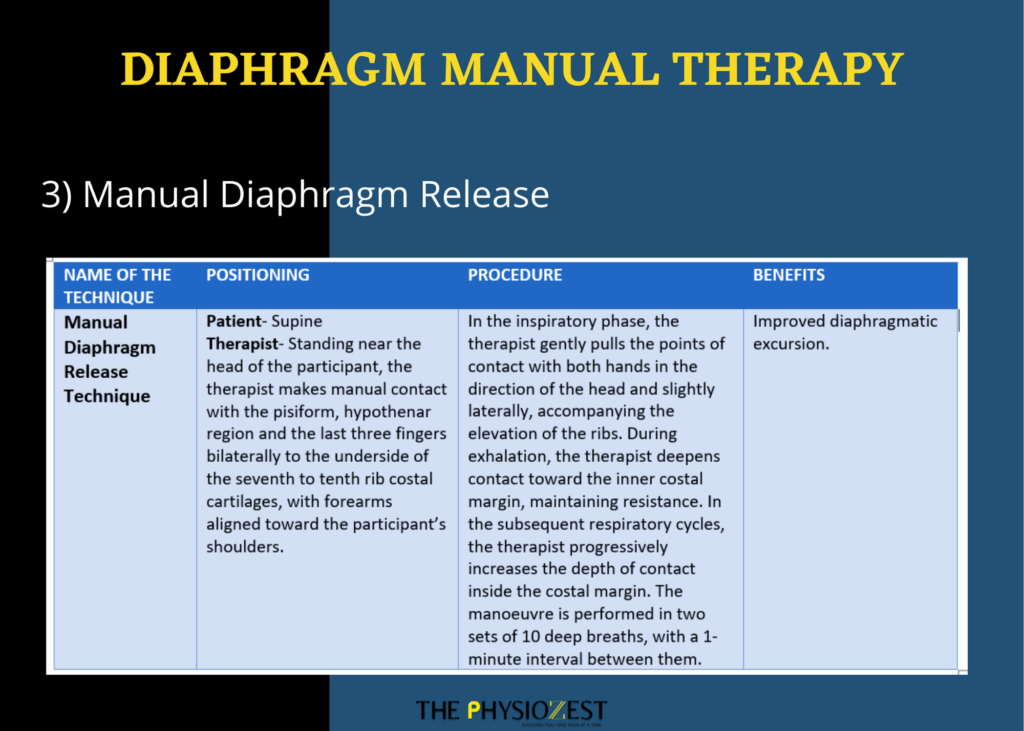
Diaphragmatic Stretch Technique [4]
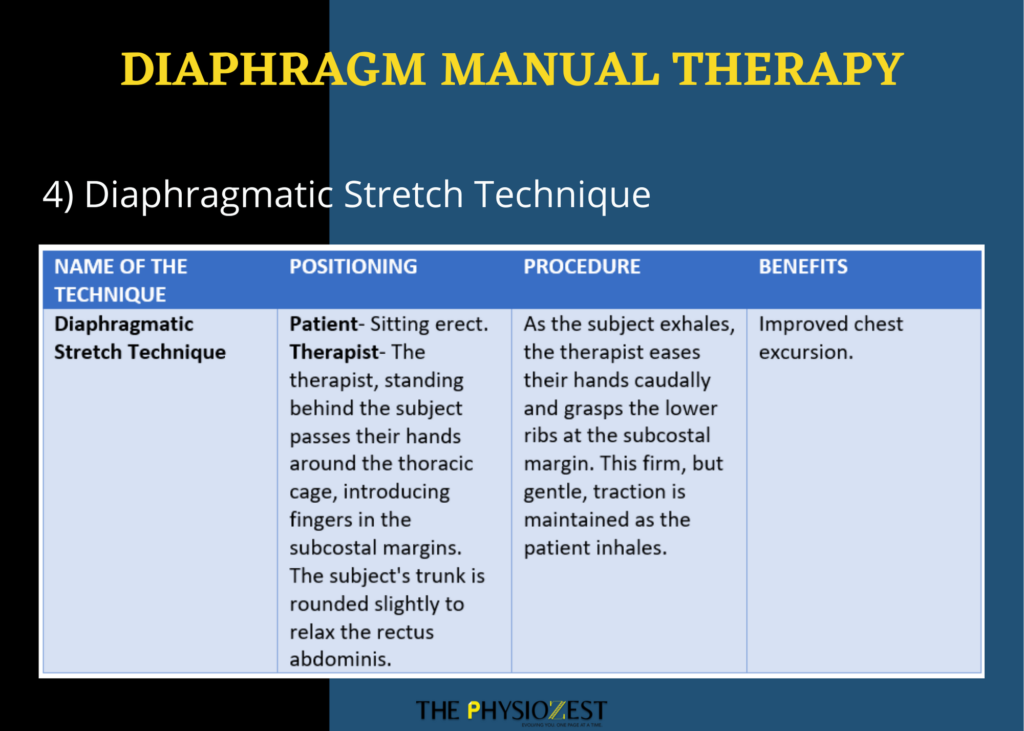
Effectiveness of Manual therapy in various conditions
1. COPD and Asthma
The obvious application of a diaphragmatic management technique is its use in the most common respiratory conditions. The Manual Diaphragm Release technique has shown improvement in diaphragmatic mobility, exercise capacity, and inspiratory capacity in COPD patients. [3] Studies have also shown improvement in chest excursion using the diaphragmatic stretch technique along with the manual diaphragm release technique.[4]
The obvious application of a diaphragmatic management technique is its use in the most common respiratory conditions. The Manual Diaphragm Release technique has shown improvement in diaphragmatic mobility, exercise capacity, and inspiratory capacity in COPD patients. [3] Studies have also shown improvement in chest excursion using the diaphragmatic stretch technique along with the manual diaphragm release technique.[4]
Diaphragm release has also shown significant improvement in FEV1 and FVC and diaphragmatic mobility in patients with childhood asthma when compared to conventional respiratory training. [8]
Although many individual studies have shown very promising results for using manual therapy in COPD patients, the number of studies is still insufficient when all the available data is considered in a systematic review. High-quality studies are needed to thoroughly evaluate the effect of Manual Therapy on COPD and other respiratory conditions. [5]
2. Cerebral palsy
The respiratory system of children with cerebral palsy is known to be an area of attention. CP children have reduced spirometry parameters, impaired postural control, and lack of trunk stabilization that progresses to muscular atrophy of respiratory muscles along with other muscles. They may also develop scoliosis and have restricted chest mobility. Thus, manual therapy of the diaphragm has been tried and tested in CP children and has shown significant results on FVC and FEV1. [6] The evidence from other studies on manual therapy suggests that it would be a useful tool in improving chest mobility as well.
3. Neurological conditions
In patients with phrenic nerve injuries and in patients with stroke and traumatic brain injuries, techniques that promote the firing up of the diaphragm can be used. Although the literature is scarce for manual therapy in neurological conditions, the existing evidence makes it imperative to explore this avenue.
4. Musculoskeletal System
The diaphragm is a centrally located muscle and its attachments to the sternum, ribs and lumbar spine make it an important part of the kinetic chain. There is some evidence of improvement in measurable parameters in the spine and muscles of the hip and back along with the muscles around the ribs after the inclusion of manual therapy in the management program. Manual therapy of the diaphragm has shown results in neck and back pain and is now being tested in conditions of the shoulder and postural muscles of the body. Clinicians have claimed its effectiveness in the musculoskeletal system and have included the manual release of the diaphragm in practice. However, a scientific approach to finding firmer evidence in the clinical implications and neurophysiological mechanisms of this technique can open huge doors in the field of holistic rehabilitation.
We have sensitized our readers and scientific minds to the new face of manual therapy and the integration of the body systems to reach the pinnacle of evidence-based and evidence-generating rehabilitation! We now have another mission at hand, a new dimension to think about and a new direction to discover and evolve!
